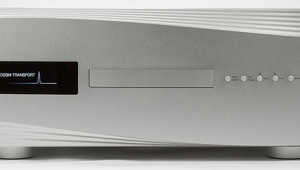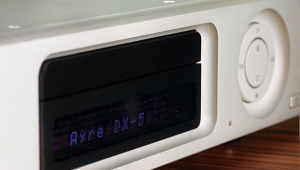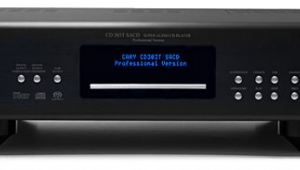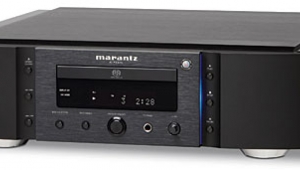| Columns Retired Columns & Blogs |
Alesis MasterLink ML-9600 Hard Disk/CD-R Recorder Page 3
There's a three-band parametric equalizer, adjustable for frequency (20.22Hz-20.22kHz), level (boost or attenuation at the selected frequency), and Q (width of the filter from the center frequency chosen) for each of the three bands. There's also a "Normalizer, which sets the highest peak value to full-scale (to, I think, maximize dynamic range and resolution) and is done in real time so that it's not permanent. Thus you can go back and change EQ, fades, and other parameters, then normalize again. Or you can ignore all of this stuff and just make straight-up CD-R compilations. I include all this mind-numbing functionality so you fully understand the MasterLink's seemingly endless versatility and what a bargain it is.
Yes, but How does it Sound?
As what? A CD player? A CD burner? A 24-bit/96kHz archival tool?
As a CD player, the Alesis MasterLink ML-9600 was pretty good, but few Stereophile readers will buy one as a primary CD player. I compared it to my reference Musical Fidelity Nu-Vista 3D, which costs more than three times as much (five times as much at MasterLink's lowest street price), and it was somewhat muted on top and drier overall. Cymbals didn't have the same sparkle, and the overall presentation wasn't as spacious or as gracious, but it wasn't embarrassing either.
I first compared the two players using a series of discs first in one player, then the other. Then I did a complete burn of one of the CD-Rs I'd recorded from the Rockport System III Sirius turntable and tonearm I'd reviewed in August 2000, to the hard drive and did a real-time A/B comparison of the two to confirm what I'd heard before. Then, just to be sure that I wasn't hearing the burner itself, I dumped the HD Playlist of the CD to a CD-R and compared the original Rockport CD-R to the copy burned on the MasterLink. Through the Musical Fidelity and the MasterLink, they sounded identical (whew!).
Were the differences between the Musical Fidelity and the Alesis due to the CD drive? The DACs? The analog output electronics? All of them? I'm not sure I know. One thing I am sure of, based on comments from correspondents and my own experience: If you're recording to HD to make 44.1kHz CDs, you're better off recording at 88.2kHz and not 96kHz, as the digital downsampling is easier at 88.2 and results in less measurable jitter and lower distortion.
At 24/96, the MasterLink delivered sound that was surprisingly close to the sound of the original LP. In a direct A/B comparison, the actual LP sounded somewhat richer and warmer, the 24/96 version (from HD or CD24) somewhat drier, with a bit of upper high-frequency emphasis and not quite the same degree of spaciousness. But it was very close.
Conclusions
While the Alesis MasterLink ML-9600 has become a celebrity in the pro-audio world, I haven't heard much about it from audiophiles. It's every bit as good as the buzz says it is. With a list price of $1699 and a street price as low as $1000, the MasterLink has to be one of the greatest values in audio as a CD burner, an archival tool, or a mixdown recorder. And once you understand how to use it, it makes creating CD compilations a blast. If there are similar machines out there that outperform it, I haven't seen them.
For me, as a reviewer, the ML-9600 will be invaluable. I can archive the sounds of cartridges, tonearms, turntables, and phono sections for future comparisons with new gear. My CD24s won't sound absolutely identical to the originals, but they'll be close enough to make the comparisons meaningful and well worthwhile.
Most highly recommended. I only wish I had the MasterLink when I started writing about analog for Stereophile!
- Log in or register to post comments




































